Malawi is in the tropical zone. For comparison, we’re at the same latitude (13° S) as central Brazil and northern Australia. And Lilongwe is about the same distance south of the equator as cities in Thailand, Honduras, and India are to the north of the equator.
We definitely don’t get the distinct summer-fall-winter-spring seasons like I (Matt) grew up with in Washington and Canada. But don’t think that means it’s the same all year-round. Here are a few Malawian seasons we’ve grown to expect every year.
The Dry Season
June to December
By the second half of the year, the rains are finished and the maize has turned brown for harvest. One color dominates the landscape: brown. Our neighbor’s roof will change from green to tan as a layer of dust coats everything.
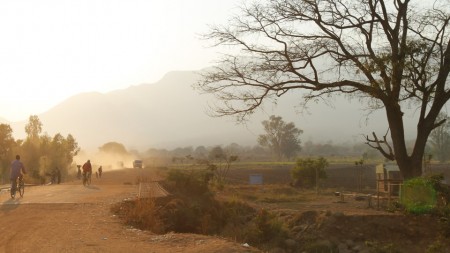
Advantages of the dry season: harvest time is a happy time in Malawi. And many dirt roads in Malawi are only passable during the dry season!
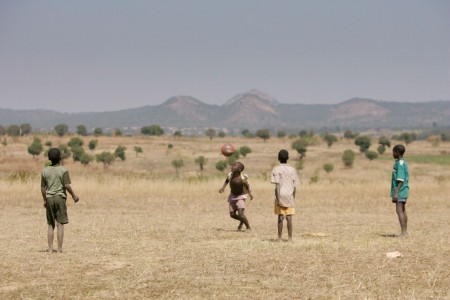
The Smokey Season
May to September

During the dry season, the city gets very smokey. Wood fires are the main method of cooking in Malawi, but as the weather gets a bit colder (60°s), people also make small fires for warmth at night. Also, after the crops are harvested, the easiest way to clear the fields for next year is to burn them.
This isn’t our favorite time of year. All this smoke makes it difficult to do some things–like breathe. But it’s not all bad: the smokey air makes for spectacular sunsets, and it’s a sign that the rains are almost here!
The Rainy Season
December to April
 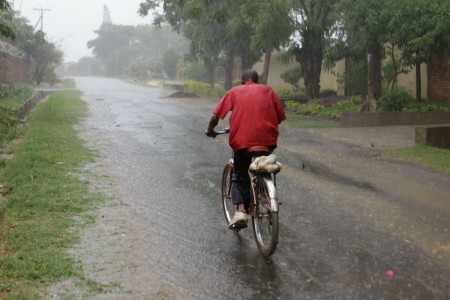
It’s the rainy season now. And we love it!

Within a couple of weeks, the color palette of the whole country changes. From pale browns to vivid greens: everything is transformed.
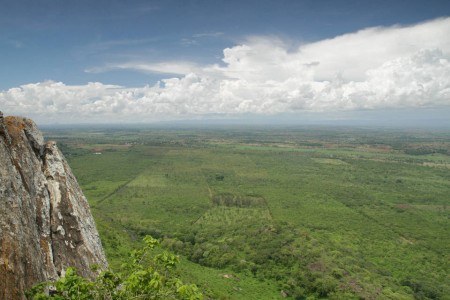
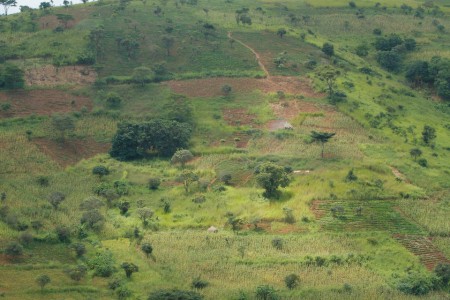
This is especially significant in a country where millions of people grow their own food. The rains wash away (legitimate) fears of starvation, and represent the hope of God’s provision for yet another year.
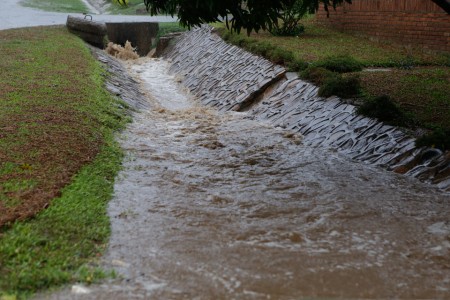
The ditch under our driveway. This day, the water was going over too.
The rainy season brings its own challenges, though. Our roof can’t keep up with the biggest downpours. During heavy rains, you’ll find us distributing buckets throughout the house to catch water leaking through in new places. But we’re thankful to have a roof. I just saw a nearby police house which had its roof ripped off by the abrupt thunderstorm winds.
But this is my favorite time of year. There’s a tangible sense of gratitude for God’s provision of rain.  I love the dramatic clouds, the lightning storms, and the rich colors.
The Termite Season
December or January
You know those tall termite mounds you see in the movies about Africa? Yeah, we’ve got those. In town, the mounds don’t usually get very big (especially because the mud is sought after to make bricks). But termites like that are one of our most persistent garden pests. Usually, they do what you expect termites to do: creep. But for one or two nights every year, right after the early rains, the termites take to the sky.
Millions of them pour out of their underground lairs in a frenzy of termite colonization. They find ways into every room of every house, fluttering around until they’re trapped. Then they drop their wings off and move off on foot, finding a place to burrow. They’re like the insect version of the Green Berets.Â
I remember the first morning that I saw a floor covered with thousands of tiny wings. I imagined an army of chameleons had snatched the insects out of the air during the night, leaving the wings behind. I’d never seen an insect drop its own wings off!
But that doesn’t mean termites don’t get eaten. In fact, Malawians treat ngumbi like manna from heaven, sautéing them, and eating them as a garnish. They taste a little like corn flakes. I especially recommend them with cajun seasoning.
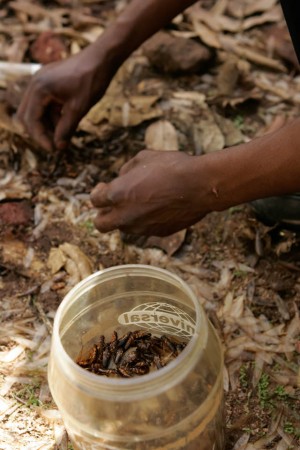
We may not get snow at Christmas, but we’re thankful to live in a place with such interesting variety throughout the year. And just in case you’re still feeling sorry for us because we don’t get autumn colors, here’s a picture with some unexpected color from Mount Mulanje last September:
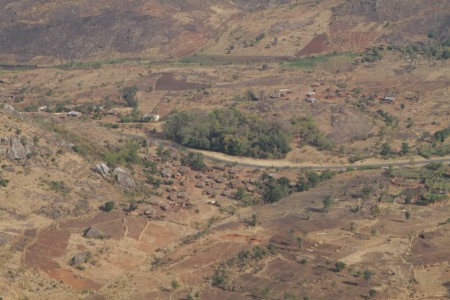
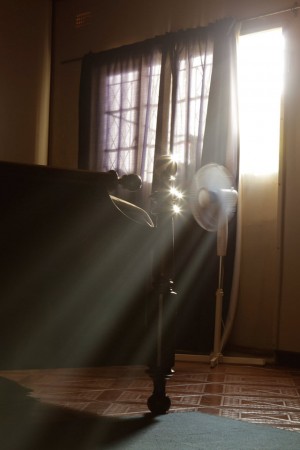
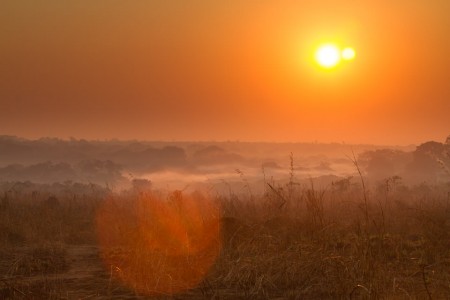
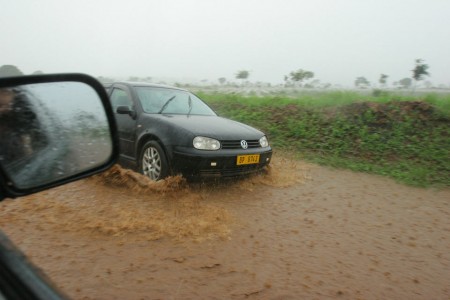


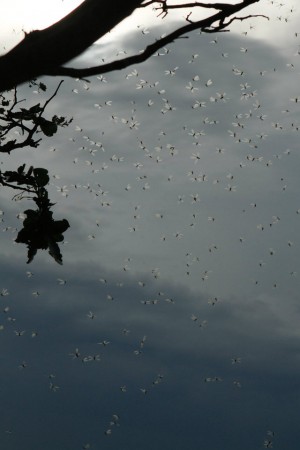
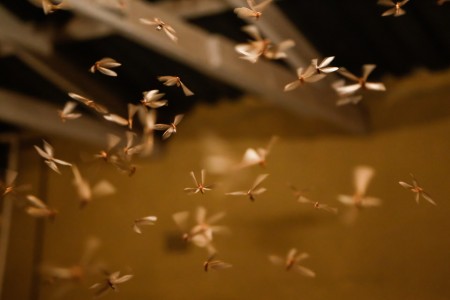
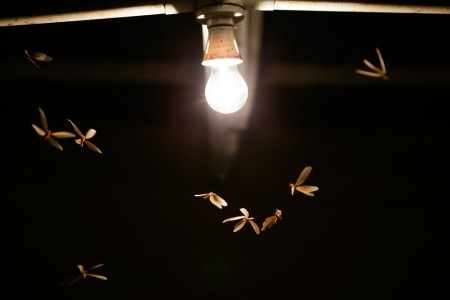
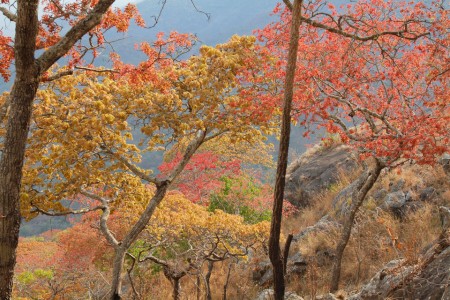
Nice to see the contrast of seasons together…
We were just there and the green season is so vibrant and beautiful with lush tropical plants everywhere. We came back to a very dry California hoping for rain.